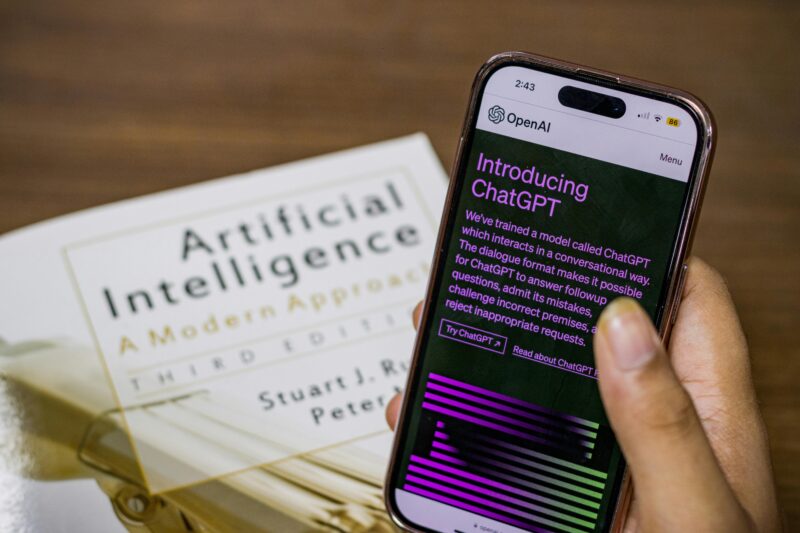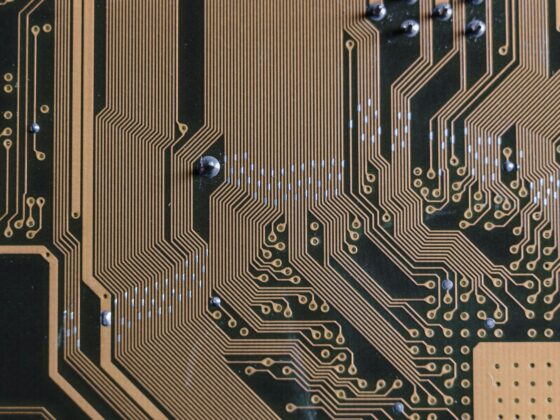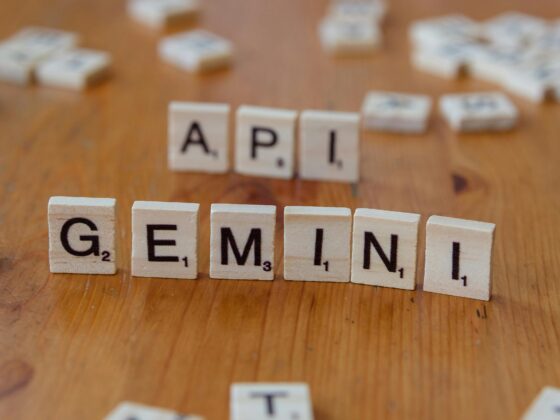The OpenAI vs Anthropic comparison has become the most discussed debate in artificial intelligence circles as these two AI giants battle for supremacy. When evaluating the OpenAI vs Anthropic comparison, professionals face a critical decision that impacts productivity, costs, and capabilities. This comprehensive OpenAI vs Anthropic comparison reveals that both companies’ flagship models are essentially at parity in raw performance, making the choice less about pure power and more about features, specialized use cases, and which AI assistant best fits your specific workflow. Whether you’re a developer choosing your coding companion, a content creator seeking the best writing partner, or a business leader deciding which AI subscription to deploy across your team, understanding the nuanced differences in this OpenAI vs Anthropic comparison is essential for making the right investment.
Quick Overview of Both Companies
OpenAI: The AI Pioneer
Founded in 2015 and backed by Microsoft with over $13 billion in investment, OpenAI launched the AI revolution with ChatGPT in November 2022. The company that introduced the world to large language models through GPT-3 and GPT-4 has fundamentally shaped how billions of people interact with AI technology.
OpenAI’s mission focuses on ensuring artificial general intelligence (AGI) benefits all of humanity. The company operates with a unique structure—a nonprofit parent organization overseeing a capped-profit subsidiary—attempting to balance commercial viability with safety-focused principles.
Key OpenAI Products:
- ChatGPT (web interface and mobile apps)
- GPT-4o, GPT-4 Turbo, GPT-4, and GPT-3.5 models
- DALL-E 3 for image generation
- Whisper for speech-to-text
- GPT-5 (latest flagship model)
- API access for developers
- ChatGPT Plus ($20/month premium tier)
- ChatGPT Team and Enterprise plans
OpenAI’s ecosystem extends beyond chat interfaces. They provide more model options including specialized models for image generation, speech-to-text, and code execution, creating a comprehensive AI toolkit. ChatGPT is available through web browsers at ChatGPT.com, mobile apps for iOS and Android, and API integrations that power thousands of third-party applications.
Anthropic: The Safety-First Challenger
Founded in 2021 by former OpenAI researchers including siblings Dario and Daniela Amodei, Anthropic positions itself as the safety-conscious alternative. The company has raised over $7.3 billion, with major backing from Google, Salesforce, and Amazon.
Anthropic’s founding principle centers on “Constitutional AI”—training AI systems with explicit values and safety constraints from the ground up rather than adding safety as an afterthought. This philosophical approach influences every aspect of Claude’s development and capabilities.
Key Anthropic Products:
- Claude (web interface and mobile apps)
- Claude 4 Opus (flagship reasoning model)
- Claude Sonnet 4.5 (balanced performance model)
- Claude Sonnet 4 (efficient model)
- Claude Haiku (fast, lightweight model)
- API access for developers
- Claude Pro ($20/month premium tier)
- Claude Team and Enterprise plans
- Claude Code (command-line coding assistant)
Claude Opus 4 and Sonnet 4 are hybrid models offering two modes: near-instant responses and extended thinking for deeper reasoning, giving users flexibility between speed and thoroughness. The Pro, Max, Team, and Enterprise Claude plans include both models and extended thinking, with Sonnet 4 also available to free users.
The Competitive Landscape
Both companies compete fiercely for developers, enterprise customers, and consumer mindshare. OpenAI’s first-mover advantage established ChatGPT as synonymous with AI assistants, while Anthropic’s focus on capabilities that matter to professionals—particularly coding and long-context understanding—has attracted a passionate developer following.
The race isn’t just about technology. It encompasses business model innovation, safety frameworks, regulatory compliance, partnership strategies, and ecosystem development. Both companies are simultaneously collaborating with and competing against each other through cross-licensing arrangements while racing to release increasingly capable models.
Model Capabilities: GPT-5 vs Claude 4
Understanding the technical capabilities of each company’s flagship models reveals where they excel and where trade-offs exist.
OpenAI’s GPT-5
GPT-5 represents OpenAI’s latest generation model, building on the GPT-4 architecture with substantial improvements:
Multimodal Capabilities: GPT-5 processes text, images, and audio natively, enabling conversations that seamlessly incorporate visual information. You can show GPT-5 a photo and ask questions about it, describe what you see in an image for analysis, or request image generation directly within conversations.
Context Window: GPT-5 maintains a 128,000-token context window (roughly 96,000 words), enabling analysis of entire books, lengthy codebases, or extended conversation histories without losing track of earlier information.
Reasoning and Reliability: OpenAI has focused on reducing hallucinations and improving factual accuracy in GPT-5. The model demonstrates more consistent reasoning across complex, multi-step problems and provides more reliable outputs for professional use cases.
Integration Ecosystem: GPT-5 integrates with a vast array of plugins, tools, and services, extending its capabilities far beyond pure language understanding. From browsing the web to executing code to interfacing with business software, GPT-5’s ecosystem enables it to function as a versatile digital assistant.
Customization: Through custom GPTs, organizations can create specialized versions of GPT-5 fine-tuned for specific tasks, branded with company knowledge, or constrained to particular use cases.
Anthropic’s Claude 4 Family
Claude 4 isn’t a single model but a family of models optimized for different use cases:
Claude Opus 4: The world’s best coding model, with sustained performance on complex, long-running tasks and agent workflows. Opus 4 excels at deep reasoning, extended analysis, and maintaining coherence across lengthy, complex interactions.
Claude Sonnet 4: A significant upgrade to Claude Sonnet 3.7, delivering superior coding and reasoning while responding more precisely to instructions. Sonnet 4 balances performance with speed and cost-efficiency.
Claude Sonnet 4.5: The latest and most impressive model, achieving 77.2% on SWE-Bench Verified and jumping to 82.0% when given extra computing power. For context, Claude Opus 4.1 scored 74.5%, Claude 4 managed 72.7%, and GPT-5 sits at 72.8%.
Claude Haiku: A fast, lightweight model optimized for high-volume, low-latency applications where speed and cost matter more than absolute capability.
Extended Thinking Mode: Claude’s unique “extended thinking” feature allows the model to spend additional computation time on complex problems, reasoning through multiple approaches before providing answers. This deliberate, thoughtful mode produces more accurate responses for challenging tasks.
Context Window: Claude models support up to 200,000 tokens (approximately 150,000 words)—significantly larger than GPT-5. This massive context window enables analysis of multiple documents simultaneously, processing entire codebases, or maintaining extremely long conversation threads.
Safety and Refusal Calibration: Claude’s Constitutional AI training makes it more likely to refuse potentially harmful requests but also more nuanced in understanding context. It aims to be helpful without being harmful, a balance that sometimes manifests as more cautious responses.
Benchmark Comparison
While benchmarks don’t tell the complete story, they provide objective performance indicators:
| Benchmark | GPT-5 | Claude Opus 4 | Claude Sonnet 4.5 |
|---|---|---|---|
| SWE-Bench Verified (Coding) | 72.8% | 72.5% | 77.2% (82.0% with extra compute) |
| GPQA (Graduate-Level Reasoning) | ~58% | ~60% | ~62% |
| HumanEval (Code Generation) | ~90% | ~92% | ~93% |
| MMLU (General Knowledge) | ~88% | ~87% | ~88% |
In coding and programming, Anthropic Claude 4 currently leads on coding benchmarks, narrowly outperforming OpenAI models as of mid-2025.
Real-World Performance
In a head-to-head code review challenge, Claude Sonnet 4.5 finished a comprehensive code review of a new feature in a large codebase in about two minutes, while GPT-5 Codex took about 10 minutes to complete the same task. Speed emerges as a crucial dimension of practical intelligence—faster models enable more interactive workflows and rapid iteration.
Accuracy, Creativity, and Coding Performance
Beyond raw benchmarks, how do these models perform on the tasks that matter most to professionals?
Accuracy and Factual Reliability
Both OpenAI and Anthropic have made significant progress reducing hallucinations—instances where AI confidently presents false information as fact. However, differences remain:
GPT-5 Accuracy: OpenAI has focused heavily on improving factual accuracy in GPT-5, implementing better fact-checking mechanisms and training data curation. The model demonstrates strong performance on factual questions and research tasks, though it still occasionally produces confident-sounding incorrect answers.
Claude 4 Accuracy: Claude tends toward more cautious responses, often acknowledging uncertainty when appropriate rather than confidently asserting potentially incorrect information. This conservative approach reduces false positives but may occasionally be less decisive when users want definitive answers.
For professional use cases where accuracy matters—medical information, legal research, financial analysis—both models require human verification. Neither should be treated as a sole source of truth, though both serve effectively as research assistants that surface relevant information requiring validation.
Creativity and Writing Quality
GPT-5 for Creative Work: GPT-5 excels at stylistic flexibility, adapting to different tones, voices, and formats. It generates creative content across fiction, marketing copy, screenplays, poetry, and more with impressive versatility. The model’s extensive training on internet content gives it strong understanding of various writing styles and genres.
Users often praise GPT-5 for “creative leaps”—generating unexpected but valuable ideas, making interesting connections between concepts, and producing engaging content that doesn’t feel formulaic.
Claude 4 for Creative Work: Claude often produces more thoughtful, nuanced writing that feels less “AI-ish.” The model tends toward more sophisticated vocabulary, better paragraph structure, and more natural-feeling prose. Professional writers frequently note that Claude’s output requires less editing to reach publication quality.
Claude’s Constitutional AI training manifests in writing that’s more ethically aware and contextually appropriate, though some users find this occasionally constrains creative expression in fiction or edgier content.
The subjective nature: Creative quality remains highly subjective. Different users prefer different styles, and both models can be prompted to adopt specific voices and approaches. The “better” creative assistant depends entirely on personal preference and the specific creative task.
Coding Performance: Where Claude Dominates
This is where clear differentiation emerges. Coding and sustained agent tasks favor Claude Opus 4, which holds a solid lead with proven benchmarks and sustained seven-hour autonomous workflows.
Why Claude Excels at Coding:
Longer Context Understanding: Claude’s 200,000-token context window means it can hold entire codebases in memory, understanding relationships between distant files and maintaining coherence across large projects. Developers can paste massive code files or multiple related files, and Claude maintains comprehensive understanding.
Code Refactoring Excellence: Claude demonstrates exceptional ability to refactor code—restructuring existing code to improve readability, maintainability, or performance while preserving functionality. This requires deep understanding of code purpose and architecture.
Debugging Prowess: Claude’s reasoning capabilities shine when debugging complex issues. It systematically analyzes code, identifies potential bug sources, and proposes targeted fixes. The extended thinking mode particularly helps with subtle bugs requiring careful logical analysis.
Architecture and Design: For higher-level software architecture discussions, Claude provides thoughtful, well-reasoned suggestions that consider trade-offs, scalability, and maintainability rather than just getting code to work.
Multi-File Code Generation: When building features spanning multiple files, Claude maintains consistency across files, correctly handles imports and dependencies, and produces cohesive implementations.
Development Workflow Integration: Claude Code, Anthropic’s command-line tool, integrates directly into development workflows, enabling developers to delegate coding tasks from their terminals without switching contexts.
GPT-5 Coding Capabilities:
GPT-5 is quickly catching up—early reports and user experiences suggest it outperforms Anthropic’s previous reasoning models in coding. While Claude currently leads, OpenAI is narrowing the gap.
GPT-5 offers advantages in:
- Broader language and framework knowledge
- Better integration with development tools through plugins
- More examples and patterns learned from extensive training data
- Strong performance on common coding tasks and tutorials
For straightforward coding tasks, quick prototypes, or learning programming concepts, GPT-5 performs excellently. The gap appears primarily in complex, large-scale codebases requiring sustained reasoning across multiple files and lengthy contexts.
Real Developer Experiences:
Surveys of professional developers consistently show Claude as the preferred coding assistant, though with notable GPT-5 advocates. Common themes:
- Claude supporters cite better code quality, more thoughtful solutions, and superior performance on complex refactoring
- GPT-5 supporters highlight faster responses, broader integration options, and better performance on quick tasks
Many developers use both: Claude for serious coding work and GPT-5 for rapid prototyping, quick questions, or when Claude’s more cautious nature becomes limiting.
Which One Should Professionals Choose?
The right choice depends entirely on your profession, use cases, and priorities. Here’s guidance for different professional contexts:
Software Developers and Engineers → Claude 4
If coding is your primary use case, Claude’s advantages are clear:
- Superior coding performance on complex tasks
- Larger context window for working with entire codebases
- Better code refactoring and architecture suggestions
- Extended thinking mode for debugging complex issues
- Claude Code integration for terminal-based workflows
Recommended: Start with Claude Pro ($20/month) for access to Opus 4 and Sonnet 4.5. The coding performance difference justifies the subscription cost for professional developers.
Content Creators and Writers → It Depends
Choose GPT-5 if you need:
- Maximum creative flexibility and stylistic range
- Image generation integrated with writing (DALL-E)
- Voice/audio capabilities for content creation
- Broader plugin ecosystem for research and workflows
- Custom GPTs for specific content types
Choose Claude 4 if you prioritize:
- Higher-quality prose requiring less editing
- More nuanced, sophisticated writing
- Longer-form content with better coherence
- More ethical/thoughtful content generation
- Reduced risk of generating problematic content
Many professional writers maintain both subscriptions, using each for different types of projects.
Business Professionals and Analysts → GPT-5
For general business use, GPT-5’s advantages typically outweigh Claude’s:
- Broader integration with business tools
- Image generation for presentations and materials
- More extensive plugin ecosystem
- Better voice interaction for hands-free use
- More widely recognized brand for team adoption
Recommended: ChatGPT Plus ($20/month) or ChatGPT Team for organizational deployment.
Researchers and Academics → Claude 4
Claude’s strengths align well with academic needs:
- Massive context window for analyzing multiple papers
- Superior accuracy on complex reasoning tasks
- Extended thinking mode for thorough analysis
- Better citation practices and source acknowledgment
- More nuanced understanding of academic concepts
Recommended: Claude Pro for serious research work, particularly in technical fields.
Data Scientists and ML Engineers → Claude 4
The coding advantages translate directly to data science work:
- Better understanding of complex data transformations
- Superior performance on algorithm implementation
- Excellent at explaining statistical concepts
- Strong performance on mathematical reasoning
- Better code for data pipeline development
Legal and Compliance Professionals → Claude 4
Claude’s cautious, thoughtful approach suits legal work:
- More nuanced understanding of context and edge cases
- Better risk awareness in suggestions
- More sophisticated reasoning about complex scenarios
- Larger context for analyzing lengthy documents
- Constitutional AI alignment with ethical considerations
Educators and Students → GPT-5
For teaching and learning, GPT-5 offers advantages:
- More conversational, engaging interaction style
- Better at explaining concepts to beginners
- Multimodal capabilities for visual learning
- Broader general knowledge across topics
- More established educational use cases and resources
The Best Solution: Use Both
Many power users maintain subscriptions to both services, each costing $20/month. At $40/month total, having access to both leading AI assistants costs less than many professional software subscriptions while dramatically amplifying productivity.
Strategy for dual use:
- Complex coding tasks → Claude Opus 4 or Sonnet 4.5
- Quick prototypes and experiments → GPT-5
- Long-form writing → Claude 4
- Creative brainstorming → GPT-5
- Research and analysis → Claude 4
- Image creation → GPT-5 (DALL-E)
- General questions → Either (whichever loads faster)
Pricing Comparison
Both companies offer similar pricing structures, though specifics differ:
Free Tiers
ChatGPT Free:
- Access to GPT-3.5 (older model)
- Limited GPT-5 access during peak hours
- Rate limits on usage
- No image generation with DALL-E
- No advanced features
Claude Free:
- Access to Claude Sonnet 4
- More generous free tier than OpenAI
- Rate limits based on usage patterns
- No access to Opus 4 or extended thinking
- No priority during peak hours
Advantage: Claude offers stronger free tier access with its current Sonnet model available free.
Premium Individual Plans ($20/month)
ChatGPT Plus:
- Full access to GPT-5
- Access to GPT-4 and GPT-3.5
- DALL-E 3 image generation
- Browse the web capability
- Priority access during peak hours
- Faster response times
- Custom GPTs
Claude Pro:
- Access to both Claude Opus 4 and Sonnet 4.5
- Extended thinking mode
- 5x more usage than free tier
- Priority access during peak hours
- Access to newest models first
- Claude Code integration
Advantage: Tie—both offer excellent value at $20/month.
Team Plans (per user/month)
ChatGPT Team ($25-30/user):
- Everything in Plus
- Higher message limits
- Admin console
- Team data excluded from training
- Shared workspace
Claude Team ($30/user):
- Everything in Pro
- Higher usage limits
- Centralized billing
- Admin dashboard
- Team data protections
Enterprise Plans (Custom Pricing)
Both offer enterprise plans with:
- Custom pricing based on scale
- Dedicated support
- SLA guarantees
- Enhanced security and compliance
- SSO integration
- Advanced admin controls
API Pricing (per million tokens)
OpenAI API:
- GPT-5: ~$5-15 per million tokens (varies by specific model)
- GPT-4: ~$30 per million tokens
- GPT-3.5: ~$0.50-2 per million tokens
Anthropic API:
- Claude Opus 4: ~$15 per million tokens
- Claude Sonnet 4: ~$3 per million tokens
- Claude Haiku: ~$0.25 per million tokens
Claude 4 Sonnet costs 20x more than alternatives like Gemini 2.5 Flash, so if cost matters for your AI product, you might want to consider alternatives.
Comparison Tables and Quick Reference
Feature Comparison
| Feature | OpenAI (GPT-5) | Anthropic (Claude 4) |
|---|---|---|
| Best For | General use, creative work | Coding, analysis, writing |
| Context Window | 128K tokens (~96K words) | 200K tokens (~150K words) |
| Coding Performance | Strong | Superior |
| Creative Writing | Versatile | Higher quality |
| Image Generation | Yes (DALL-E) | No |
| Voice/Audio | Yes | No |
| Extended Thinking | No | Yes |
| Plugin Ecosystem | Extensive | Limited |
| Mobile Apps | Yes | Yes |
| Free Tier Model | GPT-3.5 | Sonnet 4 |
| API Availability | Very widely available | Growing availability |
| Customization | Custom GPTs | Limited |
| Safety/Refusals | Moderate | More cautious |
Performance Summary
| Use Case | Winner | Reason |
|---|---|---|
| Coding (Complex) | Claude 4 | Higher benchmarks, larger context, better refactoring |
| Coding (Simple) | Tie | Both perform well on straightforward tasks |
| Long-form Writing | Claude 4 | Higher quality prose, better coherence |
| Creative Brainstorming | GPT-5 | More flexible, generates more ideas |
| Research & Analysis | Claude 4 | Larger context, extended thinking mode |
| Image Generation | GPT-5 | DALL-E integration (Claude can’t generate images) |
| General Chat | Tie | Both excellent for conversation |
| Business Documents | GPT-5 | Broader integrations, custom GPTs |
| Learning & Education | GPT-5 | More accessible explanations |
| Data Science | Claude 4 | Superior coding for data pipelines |
Price-Performance Value
| Scenario | Best Value |
|---|---|
| Free User | Claude (better free model) |
| Individual Professional | Tie (both $20/month) |
| Small Team (<10) | Claude (better per-user value) |
| Large Enterprise | Depends on integration needs |
| API/Developer | Claude Haiku for volume, Opus 4 for quality |
| Cost-Conscious | Claude Sonnet (good performance, lower API cost) |
The Verdict: Who’s Actually Winning?
The OpenAI vs Anthropic comparison reveals there’s no single winner—the race remains intensely competitive with each company holding distinct advantages.
Claude 4 wins for:
- Professional developers and coders
- Researchers requiring deep analysis
- Writers prioritizing quality over speed
- Anyone needing massive context windows
- Use cases where thoughtful, nuanced responses matter
GPT-5 wins for:
- Broader general use and accessibility
- Creative projects requiring images and multimedia
- Business users needing extensive integrations
- Anyone wanting maximum versatility
- Scenarios requiring custom model creation
Market Position: OpenAI maintains dominant market share and brand recognition. ChatGPT has become synonymous with AI assistants for mainstream users. However, among professionals and power users, Claude has built a passionate following, particularly in developer communities.
The future: Both companies are innovating rapidly. Today’s performance leader may be tomorrow’s challenger. The competitive pressure benefits users—both AI assistants improve at remarkable pace, capabilities expand, and prices remain surprisingly affordable given the technology’s power.
Final Recommendation:
For most professionals: Subscribe to both ($40/month total). Use Claude for serious work where quality matters most and GPT-5 for broader tasks, creative projects, and quick questions. The cost is minimal compared to productivity gains.
If choosing only one:
- Developers/coders → Claude Pro
- Everyone else → ChatGPT Plus
The OpenAI vs Anthropic comparison shows the real winner is the user—having two exceptional AI assistants competing drives rapid improvement, keeps prices reasonable, and ensures neither company can become complacent. The AI assistant race isn’t ending anytime soon, and that’s excellent news for anyone leveraging these transformative tools.
Frequently Asked Questions
Is Claude better than ChatGPT for coding?
Yes, Claude 4 (particularly Opus 4 and Sonnet 4.5) currently outperforms GPT-5 on coding benchmarks and real-world developer tasks. Claude Sonnet 4.5 achieved 77.2% on SWE-Bench Verified compared to GPT-5’s 72.8%. Claude’s larger 200,000-token context window allows it to understand entire codebases, and developers consistently report superior performance on complex refactoring, debugging, and architecture tasks. However, GPT-5 remains competitive for simpler coding tasks and offers broader integration options.
Which AI assistant is more accurate, OpenAI or Anthropic?
Both demonstrate similar overall accuracy, but with different characteristics. Claude tends toward more cautious responses, explicitly acknowledging uncertainty when appropriate, which reduces confident incorrect answers. GPT-5 focuses on providing definitive answers and has improved factual accuracy significantly. For professional use cases requiring factual reliability—medical, legal, financial—both require human verification. Neither should be treated as sole sources of truth, though both excel as research assistants surfacing relevant information for validation.
What’s the difference between Claude Opus 4 and Claude Sonnet 4.5?
Claude Opus 4 is Anthropic’s flagship reasoning model optimized for complex, long-running tasks and sustained agent workflows. Claude Sonnet 4.5 is the latest mainstream model that balances exceptional performance with speed and efficiency—it actually outperforms Opus 4 on coding benchmarks (77.2% vs 72.5% on SWE-Bench) and completes tasks significantly faster. Opus 4 excels at deep reasoning requiring extended thinking, while Sonnet 4.5 is ideal for most professional coding and analysis tasks where speed matters.
Can I use both ChatGPT and Claude together?
Yes, many professionals subscribe to both services ($20/month each, $40 total). This strategy leverages each AI’s strengths: use Claude for complex coding, research, and long-form writing; use ChatGPT for creative brainstorming, image generation, and tasks requiring broader integrations. Since both subscriptions cost less than many professional software tools while dramatically improving productivity, dual subscriptions offer excellent value for power users who depend on AI for professional work.
Which AI has better free tier access?
Claude offers a superior free tier, providing access to Claude Sonnet 4 (a current, capable model) with relatively generous usage limits. ChatGPT’s free tier provides GPT-3.5 (an older model) with limited access to GPT-5 during off-peak hours. For users unwilling or unable to pay for premium access, Claude’s free tier delivers significantly better performance and more consistent access to modern AI capabilities, making it the clear winner for free users.
The OpenAI vs Anthropic comparison shows both AI assistants offer exceptional capabilities at identical pricing. Your ideal choice depends on specific use cases—developers favor Claude’s superior coding performance, while general users often prefer ChatGPT’s versatility and integrations. The wisest approach for professionals? Use both, leveraging each where it excels.




